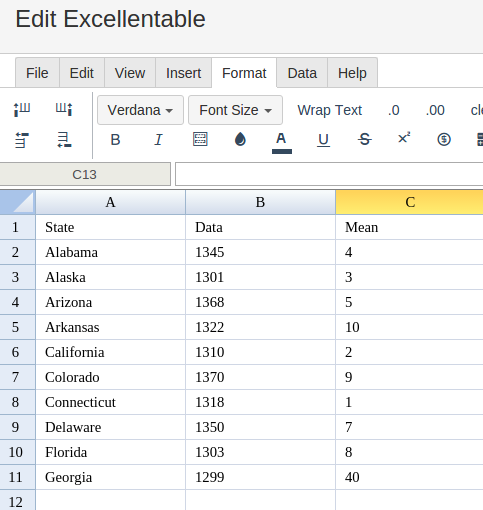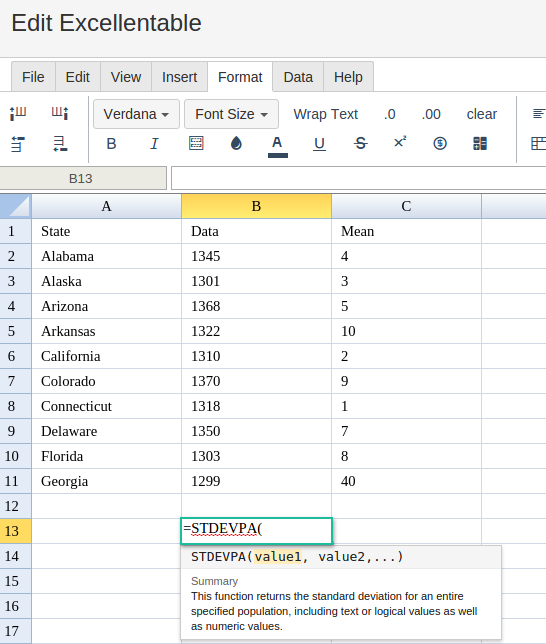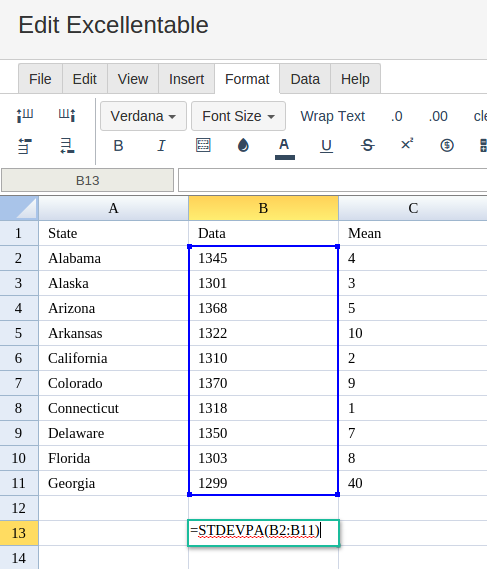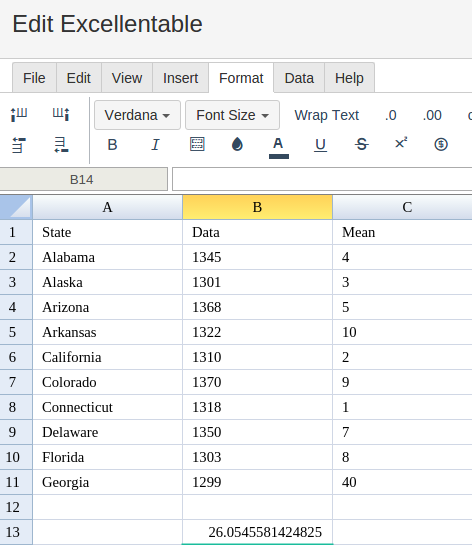STDEVPA
Definition
Calculates the standard deviation based on an entire population, setting text to the value `0`.
Sample Usage
STDEVPA(1,2,3,4,5,6,7,8,9,10)
STDEVPA(A2:A100)
Syntax
STDEVPA(value1, [value2, ...])
value1- The first value or range of the population.value2, ...- Additional values or ranges to include in the population.
Notes
Although
STDEVPAis specified as taking a maximum of 30 arguments, Excellentable supports an arbitrary number of arguments for this function.If the total number of values supplied as
valuearguments is not at least two,STDEVPAwill return the#NUM!error.STDEVPAsets each text value encountered to0for the purpose of calculation. To return an error upon encountering text, useSTDEVP.STDEVPAcalculates standard deviation for an entire population. To calculate standard deviation across a sample, useSTDEV.STDEVPAis equivalent to the square root of the variance, orSQRT(VARPA(...))using the same dataset.
See Also
VARPA: Calculates the variance based on an entire population, setting text to the value `0`.
VARP: Calculates the variance based on an entire population.
VARA: Calculates the variance based on a sample, setting text to the value `0`.
VAR: Calculates the variance based on a sample.
STDEVP: Calculates the standard deviation based on an entire population.
STDEVA: Calculates the standard deviation based on a sample, setting text to the value `0`.
STDEV: Calculates the standard deviation based on a sample.
DVARP: Returns the variance of an entire population selected from a database table-like array or range using a SQL-like query.
DVAR: Returns the variance of a population sample selected from a database table-like array or range using a SQL-like query.
DSTDEVP: Returns the standard deviation of an entire population selected from a database table-like array or range using a SQL-like query.
DSTDEV: Returns the standard deviation of a population sample selected from a database table-like array or range using a SQL-like query.
DEVSQ: Calculates the sum of squares of deviations based on a sample.
AVEDEV: Calculates the average of the magnitudes of deviations of data from a dataset's mean.
In order to use the STDEVPA formula, start with your edited Excellentable
Then type in the STDEVPA Formula in area you would like to display the outcome:
Type in the complete STDEVPA formula for a cell as shown below:
Excellentable will generate the outcome when hitting enter.
A
|
B
|
C
|
|
|---|---|---|---|
1
|
|||
2
|
|||
3
|
|||
4
|
|||
5
|
|||
6
|
|||
7
|
|||
8
|
|||
9
|
|||
10
|
|||
11
|
|||
12
|
|||
13
|




